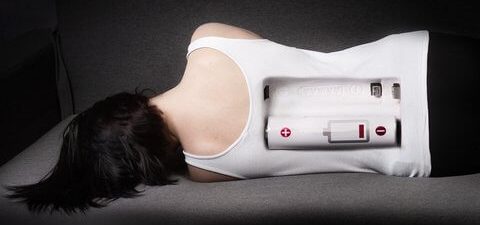Now live! RTHM Direct – simplified medication access for Long COVID, ME/CFS and related conditions. Check it out
Have you ever described yourself as feeling like one of those bobble-headed toys? Does your head often feel too heavy and difficult to keep upright? While you may brush this off as simply being tired, something else may actually be a play. A “bobblehead” or “heavy head” are terms often used by patients with craniocervical instability, a condition that affects how stable your head is at the base of the neck.
Here we take a closer look at craniocervical instability, what it means, common causes and symptoms, and treatment options that range from conservative to more invasive surgical intervention.
What is Craniocervical Instability (CCI)?
Craniocervical instability (CCI) refers to a condition characterized by excessive movement or instability between the skull (cranium) and the uppermost part of the spine (cervical spine). It involves the articulation between the occipital bone at the base of the skull and the first cervical vertebra, known as the atlas or C1 vertebra. CCI allows for excessive movement of the vertebrae at the atlanto-occipital joint and the atlantoaxial joint.
In a healthy individual, this joint allows for normal and controlled movement, such as rotation and flexion. However, in cases of craniocervical instability, the ligaments and supporting structures that hold the skull and cervical spine together may be weakened or damaged, leading to excessive motion and instability in the region.
Craniocervical instability may also be referred to as:
- CCJ Instability
- Cranial-Cervical Syndrome
- Hypermobility of the Cranial-Cervical Junction
- Atlanto-Axial Instability
- Atlanto-Occipital Instability
- Craniocervical Injury
- Upper Cervical Instability
Risk Factors for Craniocervical Instability
Craniocervical instability can be caused by various factors, including congenital abnormalities, trauma (such as whiplash injuries), degenerative conditions (such as rheumatoid arthritis), or connective tissue disorders (such as Ehlers-Danlos syndrome). These factors can contribute to the laxity of the ligaments and lead to abnormal movement of the craniocervical junction.
Common Symptoms
CCI occurs when ligaments (the Alar, Transverse, and Accessory) from the skull to the spine are too loose or lax and are unable to restrict unsafe movement of the head. Symptoms of CCI can include but are not limited to:
- Feeling as if your head is too heavy
- Occipital headaches
- Neck, shoulder, and jaw pain
- Tenderness at the base of the skull
- Tinnitus
- Visual disturbances
- Orthostatic intolerance
- Tremors
- Vertigo
- Dizziness
- Shortness of breath
- Nausea
- Cognitive dysfunction
Diagnosing Craniocervical Instability
Diagnosis of CCI typically involves a combination of medical history, physical examination, imaging studies (such as X-rays, CT scans, or MRI), and sometimes specialized tests like dynamic flexion-extension X-rays or upright MRI.
Treatment Options
Treatment options for craniocervical instability depend on the severity of symptoms and underlying causes. Conservative measures, such as physical therapy to strengthen the neck muscles and improve stability, may be initially recommended. In some cases, bracing or external support devices may be used to limit excessive movement.
However, more severe cases may require surgical intervention to stabilize the craniocervical junction. Surgical options may include fusion procedures, where the skull and cervical spine are permanently immobilized using bone grafts or hardware, or more advanced techniques such as occipitocervical fusion or atlantoaxial fusion.
Craniocervical Instability (CCI), ME/CFS, and Long COVID
RTHM’s Co-Founder and Chief Medical Officer, Dr. Jennifer Curtin sat down with Gez Medinger to discuss craniocervical instability and other common structural disorders and how these conditions appear often in those with ME/CFS and now in those with Long COVID. Listen to Dr. Curtin explain these conditions and how they relate to each other in the links below.
The Role of CCI, Chiari, and Tethered Cord in Long COVID
Do You Have CCI, Chiari, or Tethered Cord? The Symptoms to Look Out for with Long COVID or ME/CFS
Diagnosis and Treatment of CCI, Chiari & Tethered Cord in Long COVID and ME/CFS

Get updates
Join our mailing list



